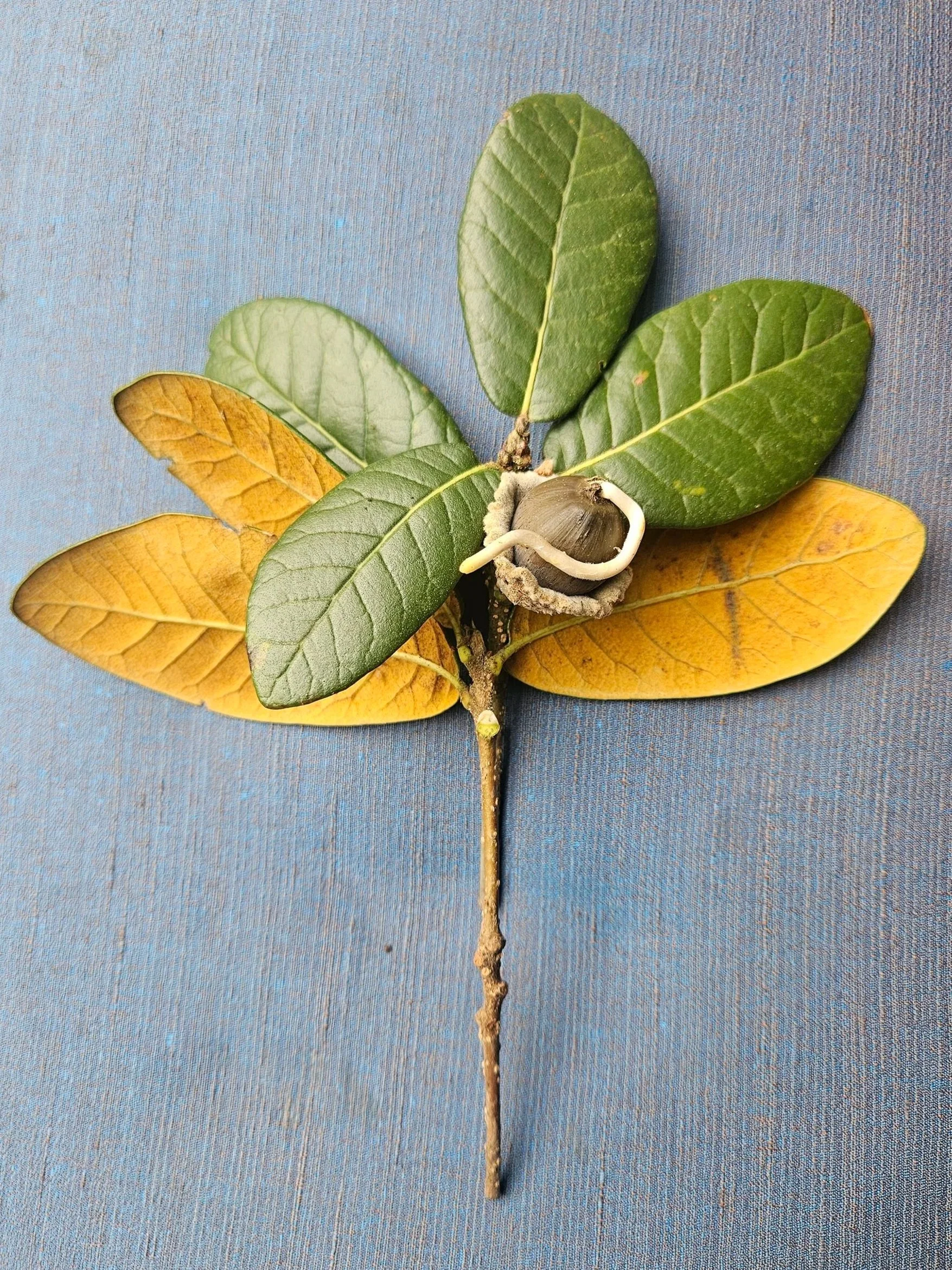I had noticed in previous years that the fruits from this oak dropped quite early in the season and I missed picking them off the tree before they had dropped and disappeared or were scoffed by rodents. This year I was ready early and picked a bag full while the acorns were still on the stem and put them in a dark cool room for a while till I got back to them.
Remembering today that I had this stash to sort out I tipped the bag out on the table to find that several had already started to push out roots from the acorn while still on the branchlets. These fruits were germinating in the cup after only a couple of weeks in a plastic bag, crazy stuff!. Watch this space as I will post a visual update on this acorns progress in another post.
After pausing for thought this impatience all makes sense. The Quercus group Heterobalanus has developed in cold, dry valleys of Eastern Asia where moisture isn’t available year round. Unlike the Cyclobalanopsis Group which is more suited to wetter areas of the same regions the Q. guyavifolia only has a limited season to fruit and germinate during the same summer monsoon period. Clever adaptation which has evolved with the regional geological uplift over millions of years.
The local goat herders in NW Yunnan from where this tree came from were keen to use the foliage for feeding their stock in the Autumn where it was piled up high along the side of the road in a side valley north of the Yangtze. Of all the oaks in this section, guyavifolia has the most striking foliage underside which is best viewed when planted with full exposure to the west where the late afternoon sun lights the tree up >> it’s a magnificent sight.






































